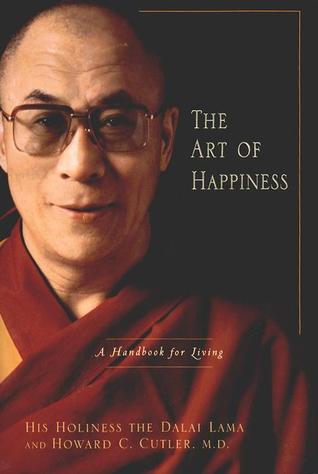
"The Art of Happiness" Summary
nonfiction | 336 pages | Published in 1998
Estimated read time: 6 min read
One Sentence Summary
"The Art of Happiness" offers practical advice and spiritual wisdom from the Dalai Lama on achieving lasting happiness.
Table of Contents
Introduction
"The Art of Happiness" is a collaborative work by His Holiness the 14th Dalai Lama, Tenzin Gyatso, and psychiatrist Howard Cutler. This book provides practical advice and profound insights on achieving lasting happiness in the face of life's challenges. The Dalai Lama shares his wisdom on the nature of happiness, the importance of compassion, and the power of positive thinking. Through personal anecdotes and engaging conversations, the book offers a blend of Eastern spirituality and Western psychology, making it a valuable guide for anyone seeking a more fulfilling and meaningful life.
Brief Synopsis
Plot Overview
"The Art of Happiness" revolves around the central theme of finding happiness in everyday life. The book delves into the Dalai Lama's teachings and insights on happiness, compassion, and the human mind. Through a series of dialogues with Howard Cutler, the Dalai Lama imparts wisdom gained from his experiences as a spiritual leader and exiled leader of Tibet. The authors explore various aspects of happiness, including the role of empathy, the impact of materialism, and the significance of inner peace.
Setting
The book's setting is primarily based on the personal encounters and discussions between the Dalai Lama and Howard Cutler. These conversations take place in various locations, including the Dalai Lama's residence in Dharamshala, India, and during his travels to the United States. The setting also extends to the cultural and spiritual backdrop of Tibetan Buddhism, which heavily influences the Dalai Lama's teachings on happiness and well-being.
Main Characters
Below are the main characters in "The Art of Happiness," along with brief descriptions of their roles and contributions to the book:
| Character | Description |
|---|---|
| Dalai Lama | His Holiness the 14th Dalai Lama, Tenzin Gyatso, serves as the primary spiritual leader and source of wisdom on happiness and compassion. |
| Howard Cutler | Howard Cutler, a psychiatrist, is the co-author of the book and engages in insightful dialogues with the Dalai Lama, providing a Western perspective. |
Summary of Different Story Points Over Chapters
Chapter 1: The Purpose of Life
The book begins with the Dalai Lama's profound insights into the nature of happiness and the purpose of life. He emphasizes the importance of inner peace and genuine compassion as fundamental elements of a fulfilling existence.
Chapter 2: Human Warmth and Compassion
In this chapter, the Dalai Lama discusses the role of compassion and human warmth in fostering happiness. He provides practical advice on cultivating empathy and altruism, highlighting their transformative power in interpersonal relationships.
Chapter 3: Transforming Suffering
The authors delve into the concept of transforming suffering into opportunities for growth and resilience. The Dalai Lama shares his perspective on overcoming adversity and finding meaning in life's challenges.
Chapter 4: Overcoming Anxiety and Insecurity
The Dalai Lama and Howard Cutler explore the sources of anxiety and insecurity, offering valuable strategies for managing and transcending these negative emotions. The chapter provides practical tools for achieving emotional balance and inner tranquility.
Chapter 5: Self-Created Problems
This chapter delves into the notion of self-created problems and the role of the mind in shaping our experiences. The authors discuss the power of positive thinking and mindfulness in addressing self-imposed obstacles to happiness.
Chapter 6: Facing Suffering and Anguish
The Dalai Lama shares profound insights on confronting suffering and anguish with resilience and compassion. The chapter offers guidance on finding strength and solace in the face of personal and collective hardships.
Chapter 7: Dealing with Anger and Hatred
The authors explore the detrimental effects of anger and hatred on mental well-being, providing practical methods for managing and transforming these destructive emotions. The chapter emphasizes the liberating potential of forgiveness and inner peace.
Chapter 8: Achieving Genuine Happiness
In the final chapter, the book culminates in a comprehensive discussion on achieving genuine happiness through a combination of spiritual principles, psychological insights, and practical wisdom. The Dalai Lama and Howard Cutler offer a holistic framework for leading a fulfilling and joyful life.
Main Events
The main events in "The Art of Happiness" revolve around the insightful dialogues and teachings shared by the Dalai Lama and Howard Cutler. These events include discussions on the nature of happiness, the power of compassion, and practical strategies for overcoming negative emotions. The book's main events are centered on the exploration of inner peace, empathy, and the cultivation of genuine happiness in everyday life.
Themes and Insights
Themes
- Happiness and Fulfillment: The book delves deeply into the theme of finding lasting happiness and fulfillment through inner transformation and compassionate living.
- Compassion and Empathy: The importance of compassion and empathy in nurturing personal well-being and harmonious relationships is a central theme throughout the book.
- Mindfulness and Positivity: The authors emphasize the significance of mindfulness and positive thinking in transcending suffering and achieving emotional balance.
Insights
- Inner Peace and Contentment: The Dalai Lama's teachings offer profound insights into attaining inner peace and contentment, irrespective of external circumstances.
- The Power of Compassion: The transformative power of compassion in alleviating personal suffering and fostering genuine happiness is a key insight shared in the book.
- Emotional Resilience: The book provides valuable insights into developing emotional resilience and overcoming negative emotions such as anxiety, anger, and insecurity.
Reader's Takeaway
"The Art of Happiness" offers readers a transformative journey towards understanding the nature of happiness, compassion, and the human mind. Through the wisdom of the Dalai Lama and the insights of Howard Cutler, readers gain practical tools for cultivating inner peace, managing negative emotions, and embracing a more fulfilling way of life. The book serves as a timeless guide for anyone seeking authentic happiness and a deeper sense of well-being.
Conclusion
In conclusion, "The Art of Happiness" provides a compelling fusion of spiritual wisdom and psychological insights, offering a roadmap to enduring happiness and well-being. The collaborative work between the Dalai Lama and Howard Cutler serves as a beacon of hope for individuals navigating life's challenges, inspiring readers to cultivate compassion, resilience, and genuine happiness. This timeless book continues to resonate with audiences worldwide, making it an invaluable resource for those on the path to personal transformation and inner contentment.
The Art of Happiness FAQ
What is 'The Art of Happiness' about?
Who is the author of 'The Art of Happiness'?
What can readers expect to learn from 'The Art of Happiness'?
Is 'The Art of Happiness' a religious book?
Are there practical exercises or techniques in 'The Art of Happiness'?




